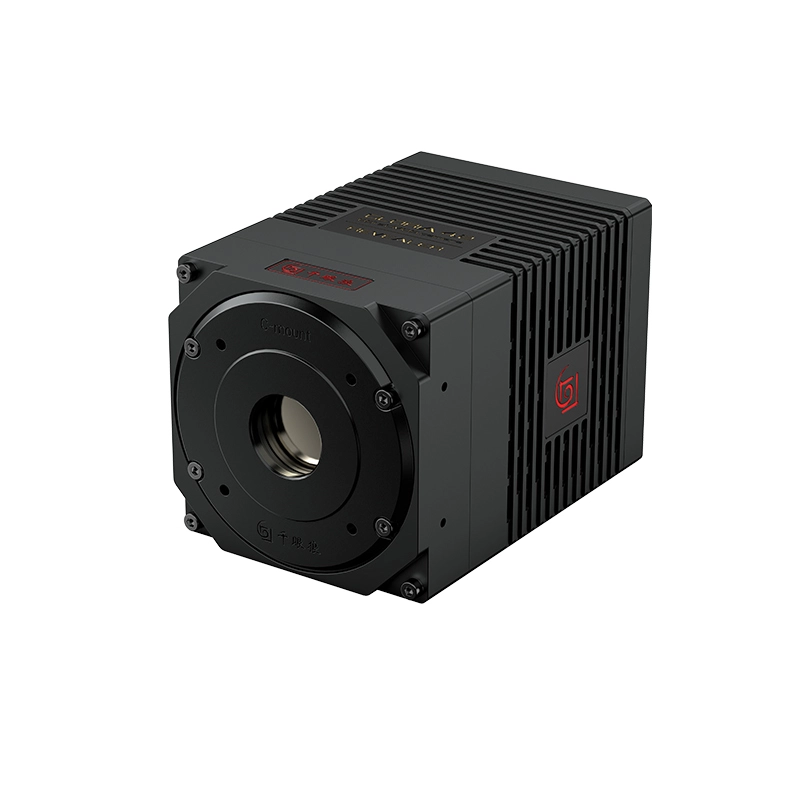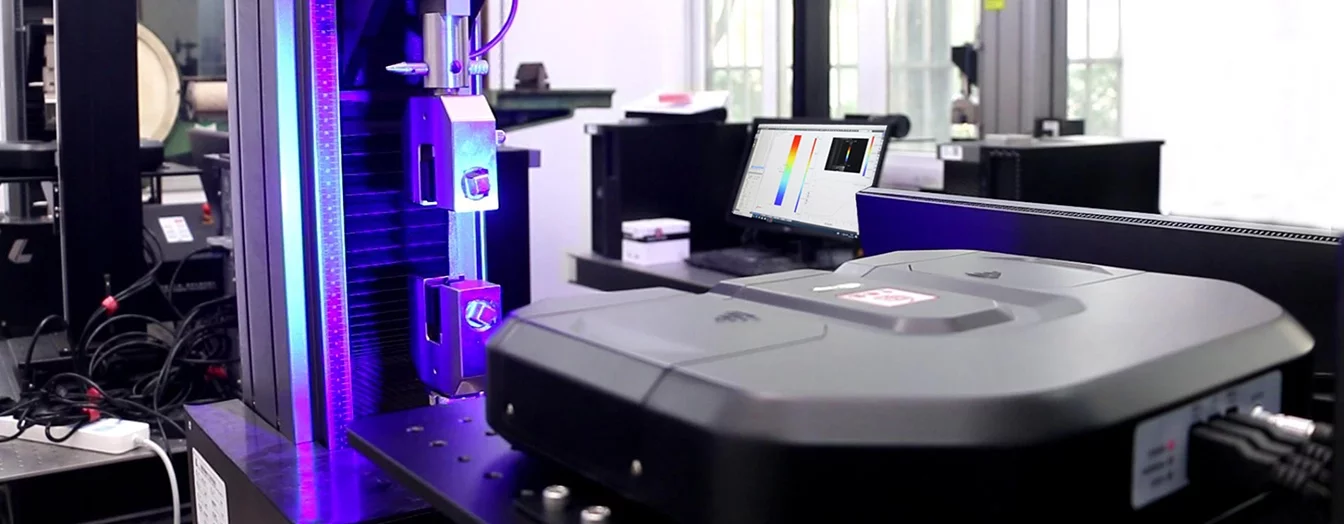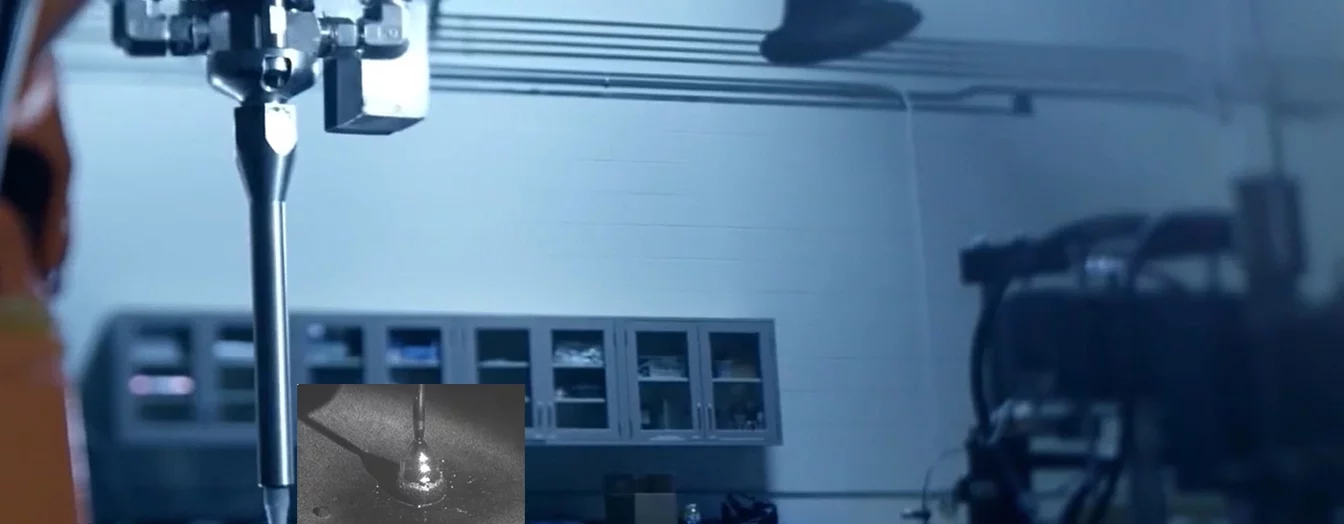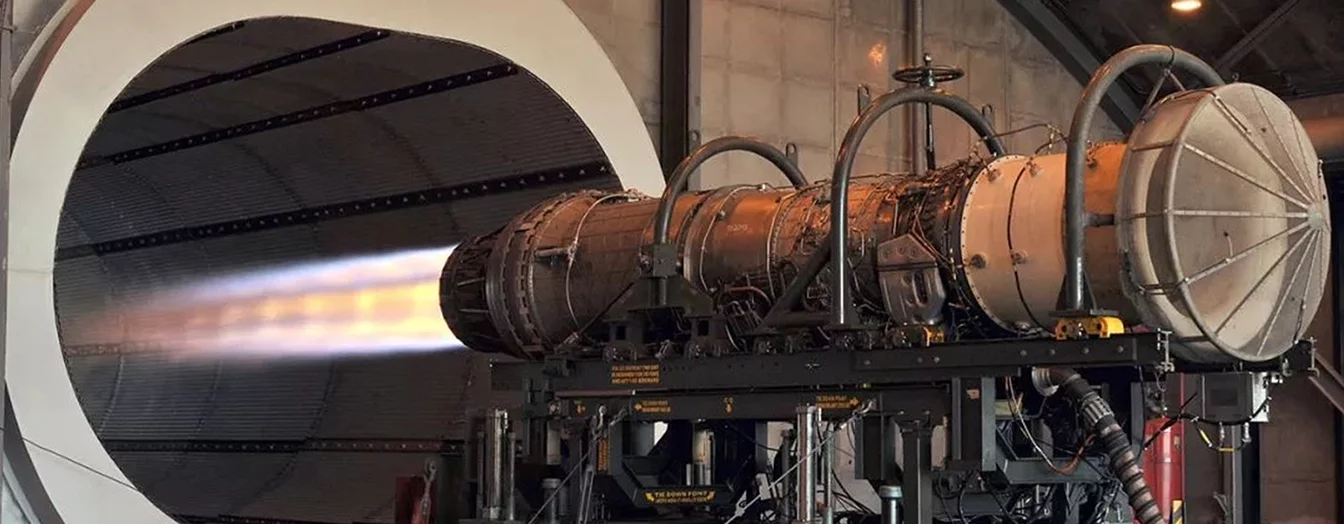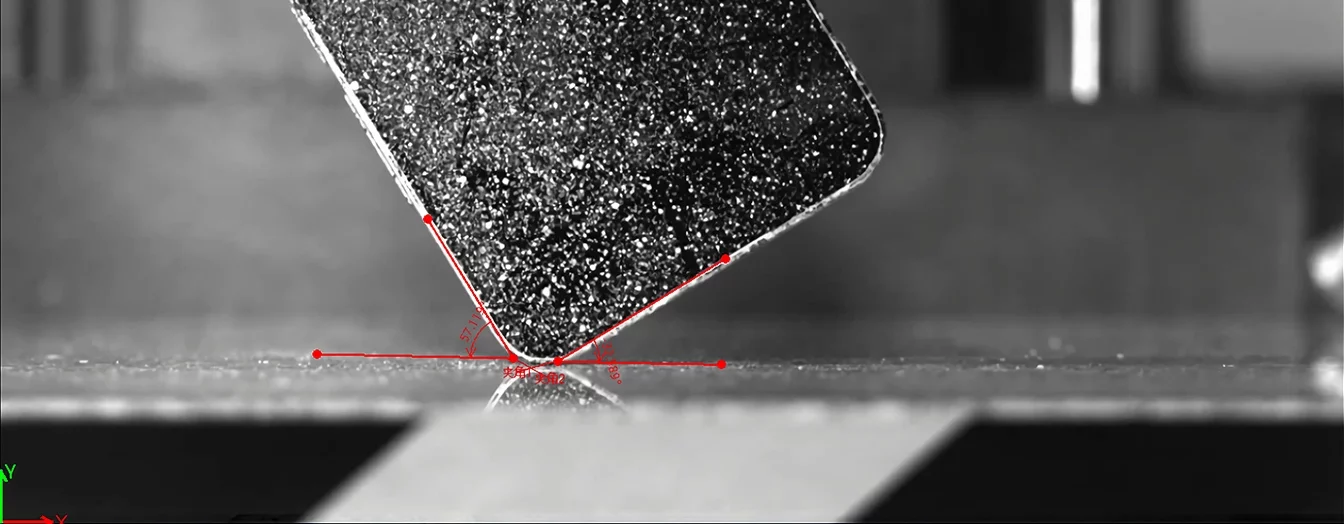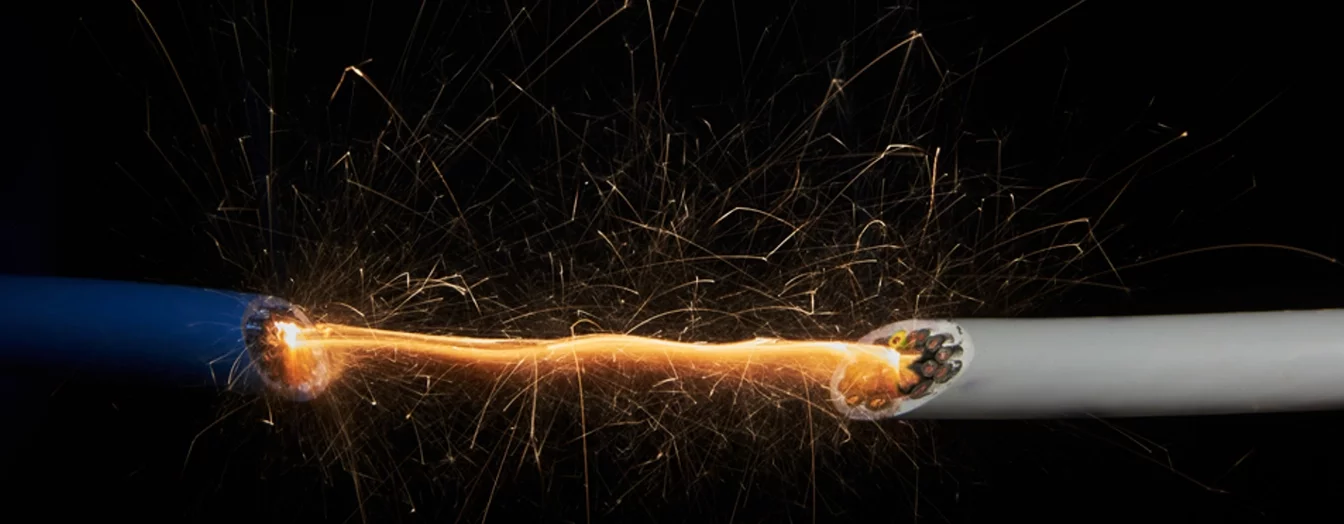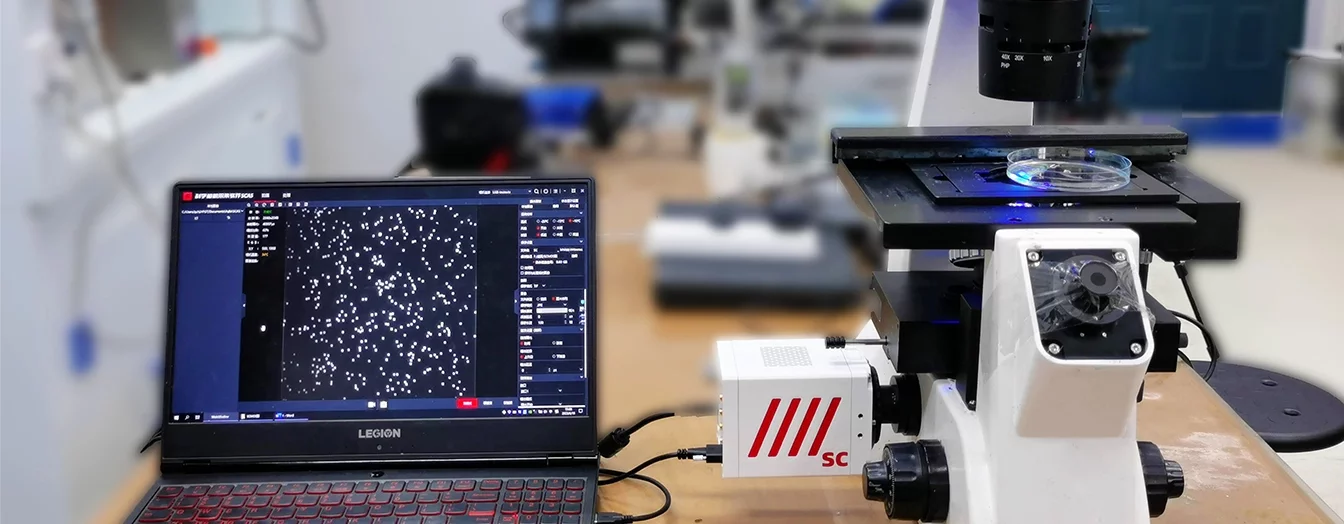1.Application of Two-Phase Flow Measurement and Analysis Technology in CSBG Research
In the study of gas-liquid two-phase flow, the statistical and dynamic measurement of the gas phase has a significant impact on modeling, flow resistance, heat and mass transfer issues in two-phase flow. Accurately measuring parameters such as bubble size, shape, position, and dynamic velocity in a group of bubbles can support the analysis of key parameters in two-phase flow, such as bubble dynamic trajectories, gas holdup distribution, and slip velocity ratio. Among these, the parameter of bubble size is of great significance to bubble flow. Bubble size is a key parameter for microbubble turbulence drag reduction, which is also limited by the difficulty of producing bubbles of different sizes. Therefore, the size effect of microbubble turbulence drag reduction requires further research.
Continuous Spectrum Bubble Generator (CSBG) is a bubble generator, proposed by the team of Shanghai Jiao Tong University, that can produce bubbles with continuously controllable sizes. It incorporates a servo motor and a rotating impeller, adjusting the mechanical shear strength by controlling the impeller speed to achieve the desired bubble size. Its greatest feature is the ability to obtain bubbles of a set size under the same gas-liquid flow conditions (with constant gas and liquid flow rates), making it applicable in various research fields involving gas-liquid two-phase flow.
The team from Shanghai Jiao Tong University conducted visualization experiments while researching the principle of continuous spectrum bubble generators. They analyzed the macroscopic characteristics of the generator using a Revealer high-speed camera combined with two-phase flow measurement and analysis technology, verifying the reliability of the Continuous Spectrum Bubble Generator (CSBG). The corresponding research results were published in the internationally renowned journal Chemical Engineering Science, citation Format: Chen, W., Huang, G., Hu, Y., Yin, J., & Wang, D. (2022). Experimental study on Continuous Spectrum Bubble Generator with a new overlapping bubbles image processing technique. Chemical Engineering Science,117613.doi:https://doi.org/10.1016/j.ces.2022.117613》
2.Experimental Process
1/2. Experimental Methods
The team from Shanghai Jiao Tong University has developed a method to control the size of generated bubbles by using servo motors to manipulate mechanical shearing, achieving continuous control over bubble dimensions. Due to the challenges in controlling bubble sizes, the experimental research first estimates the required bubble dimensions and then generates bubbles close to the desired size by controlling the orifice diameter of the bubble generator. The actual bubble sizes are measured using methods such as high-speed camera observation and two-phase flow measurement analysis.

Image 1--Schematic diagram of the experimental circuit
Image 1 is a schematic diagram of the experimental study on the macroscopic characteristics of CSBG, which consists of a bubble generator, high-speed shearer, visualization measurement section, electromagnetic flowmeter, gas flow controller, pump, several valves, pipes, and other components. To verify the macroscopic characteristics of CSBG, the diameter of the generator's orifice is set to 2mm. In scenarios requiring larger or smaller source bubbles, this can be achieved by enlarging or reducing the orifice size. A cutting impeller is installed inside the high-speed shearer, driven by a servo motor with its rotational speed precisely controllable to ±3rpm. During the experiment, the intensity of cutting is altered by controlling the rotational speed of the impeller, thereby achieving control over the bubble size. The experimental circuit is a circular channel with an inner diameter of 50mm. To minimize the impact of refractive index on high-speed imaging, a rectangular water tank is placed outside the visualization measurement section as an observation box. The experimental gas-liquid two-phase mediums are water and air, respectively. The liquid phase flow rate is measured by an electromagnetic flowmeter, while the gas phase is stored in a gas tank after being compressed by a compressor and its flow rate into the circuit is controlled by a gas flow controller. To ensure separation of the gas-liquid phases in the circuit, a large water tank is set up at the upper part of the circuit, utilizing gravity to achieve gas-liquid phase separation and ensuring that there is no influence from preceding bubbles at the experimental inlet section.
The three primary factors that affecting the bubble size in CSBG are: gas phase flow rate, liquid phase flow rate, and motor speed. To investigate the impact of motor speed on bubble size under different gas and liquid phase flow conditions, this experiment set up two instances with a total of 23 groups and 460 experimental points, as shown in Table 1.

Table 1—Experimental Condition
2/2. Bubble Visualization Measurement
The experiment utilizes the Revealer high speed camera, in collaboration with the team from Shanghai Jiao Tong University, to develop a two-phase flow measurement and analysis technology. This setup establishes a bubble visualization measurement platform to further observe and analyze the movement process and size of bubble groups in each CSBG experimental group during the experiment. The visualization measurement processes overlapping bubble images based on concave point detection and rapid segmental arc clustering. It involves background removal, binarization, and boundary extraction of the bubble images, as well as concave point segmentation, arc segment clustering, and fitting to obtain the size information of the bubbles.

Image 2--Bubble Image Processing Technology Flowchart
3/2. Experimental Study on CSBG

Image 3-- Original Bubble Images at Different Rotational Speeds
To explore the preliminary experimental characteristics of CSBG, the influence of different rotational speeds on bubble size was studied under identical gas-liquid flow conditions. The typical visualization results of the observation window and the corresponding bubble size distribution at different rotational speeds were displayed. As shown in Image 3, when CSBG is not operating (0rpm, 3a), the bubbles generated by the sprayer are relatively uniform in size. When CSBG starts working and the rotational speed is low (0-600 rpm, Images 3b and c), the rotation of the impeller has a limited effect on bubble size. Although there are more small bubbles scattered in the bubble image, larger bubbles still dominate. With the increase of impeller speed (over 600rpm, Images 3d to h), the rotation of the impeller plays an important role in bubble breaking, significantly reducing the bubble size. In the experiment, it can be visually observed from the bubble images that when the rotational speed exceeds 600rpm, the bubble group rapidly decreases with the increase of the rotational speed. As mentioned above, the bubble size distribution of the source bubbles generated by the sprayer is expected to be close to a uniform distribution, which will make it easier to study the characteristics of CSBG through the bubble size distribution at the outlet of the high-speed shear device.
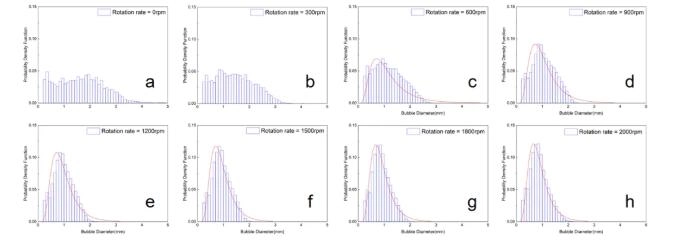
Image 4-- Different rotational speeds correspond to different bubble size distributions.
As shown in Image 4a, the source bubbles generated by the distributor are roughly similar in size, mainly concentrated within the range of 0–3mm. However, even when the impeller is not operating, bubbles still have to pass through the shear device and a bending pipe from the distributor to the observation tank. Therefore, the presence of larger and smaller bubbles can be explained. With an increase in the impeller speed, the bursting of large bubbles intensifies and they gradually disappear from the bubble images. Fitting the bubble size distribution with a log-normal distribution model reveals that the degree of fit between the bubble size distribution and the log-normal distribution increases with increasing speed. This indicates that when the rotational speed is relatively high, the bubble size distribution of the bubble group produced by CSBG approximately satisfies the log-normal distribution.
Furthermore, another important parameter of the bubble generator is the bubble size distribution. The full width at half maximum (FWHM) of the bubble size distribution is used here to indicate the concentration of the bubble size distribution. A careful analysis of all experimental results regarding bubble size distribution revealed that when the rotational speed exceeds 600rpm, the FWHM of all bubble size distributions is no greater than 1mm, indicating that the bubbles produced by CSBG are concentrated within a relatively narrow range.

Image 5-- Average Bubble Size Change Curve with Rotation Speed (a) Unfitted (b) Fitted (R refers to rotation speed)
In order to quantitatively study the impact of rotational speed on bubble size, the research team analyzed the changes in average bubble diameter (AMD and SMD) as the rotational speed increased. As shown in Image 5, both AMD and SMD significantly decrease with the increase in rotational speed. When the rotational speed is below 1500 rpm, the size of the bubbles steadily decreases with the increase in rotational speed. The high-speed rotation of the impeller provides energy for the fluid rotation, and the formation of swirl aggravates the coalescence of small bubbles. At this stage, bursting and coalescence compete with each other to maintain dynamic stability of bubble size. Therefore, when the rotational speed is below 1500 rpm, the rotational speed of the impeller plays an important role in the average bubble size. Image 5(b) shows that AMD has a rotational speed power law of 0.27, while SMD has a rotational speed power law of 0.37. When the volume void fraction and liquid mass flow rate change, the effect of CSBG on bubble size is significantly different.
The team conducted a detailed discussion on the impact of volume void fraction on bubble size through case studies. The CSBG operating range is divided into two areas: the initial area and the stable area. Within the 0-500 rpm range, results under all volume void fraction conditions indicate that AMD and SMD have almost no quantitative relationship with the increase in rotational speed, only fluctuations.

Image 6--Examples of Original Bubble Images Visualized at Different Gas Velocities and Rotational Speeds
Combining the results of the high-speed acquisition of original bubble images, as shown in Image 6, this phenomenon can be explained as following: in the initial region, due to the low rotational speed, a stable high-speed shear field cannot be formed. The energy provided by the impeller's rotation is insufficient to stably break the bubbles, leading to an unstable trend in average bubble size. Therefore, the region from 0 to 500rpm is considered the initial stage of CSBG. When the impeller's rotational speed exceeds 500rpm, the average bubble size steadily decreases with the increase in rotational speed. In this region, the high-speed rotation of the impeller forms a stable shear field, providing enough energy for the source bubbles entering the shear field to break. The breaking of bubbles is controlled by the impeller's rotation, resulting in a steady decrease in the average size of bubbles. Therefore, the region where the rotational speed exceeds 500rpm is considered a stable region.
Experimental Result
This experiment designed and fabricated a CSBG prototype machine to investigate its performance under various operating conditions. The team verified the feasibility of CSBG generating continuous bubbles of different sizes through visualization experiments and two-phase flow measurement systems, obtaining the experimental working curve of CSBG and fitting the relationship between average bubble size and two influencing factors: rotational speed and gas phase flow rate.
The experimental results show that CSBG has the ability to produce continuous bubbles within the millimeter range; the stable working area is between 500~1500rpm, where SMD is directly proportional to the -0.37th power of the rotational speed within the stable working area; CSBG's BMD increases with the increase of the apparent flow velocity of the gas phase, and SMD is directly proportional to the 0.263rd power of the apparent flow velocity of the gas phase within the stable working area; however, its relationship with the apparent velocity of the liquid phase is not significant.




